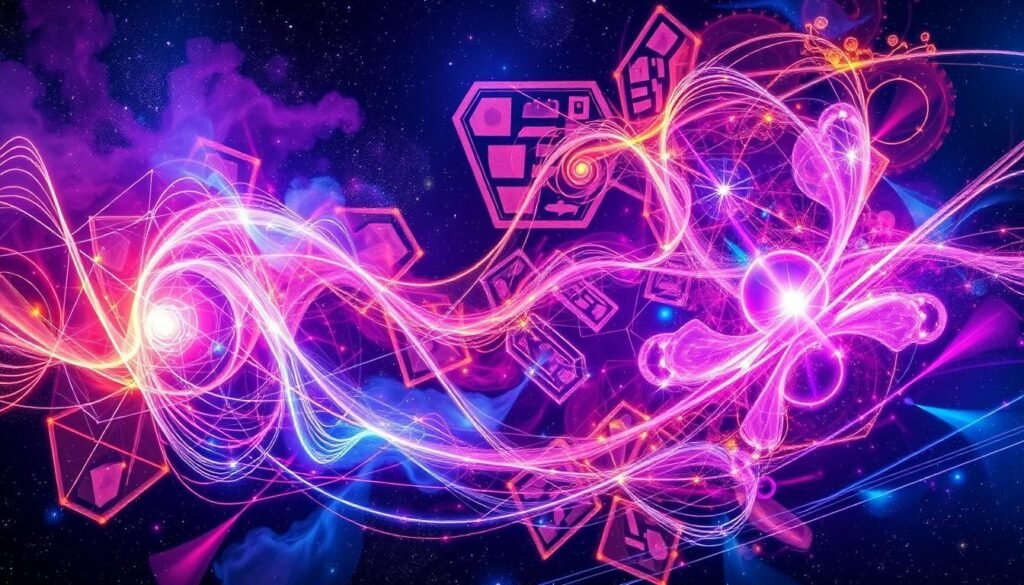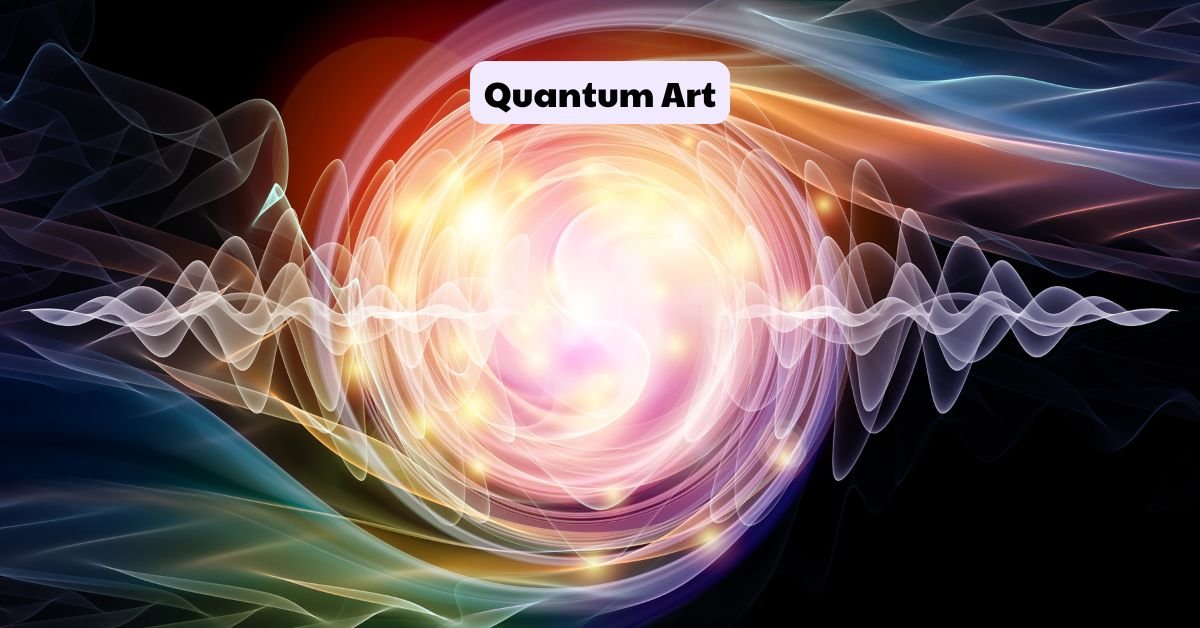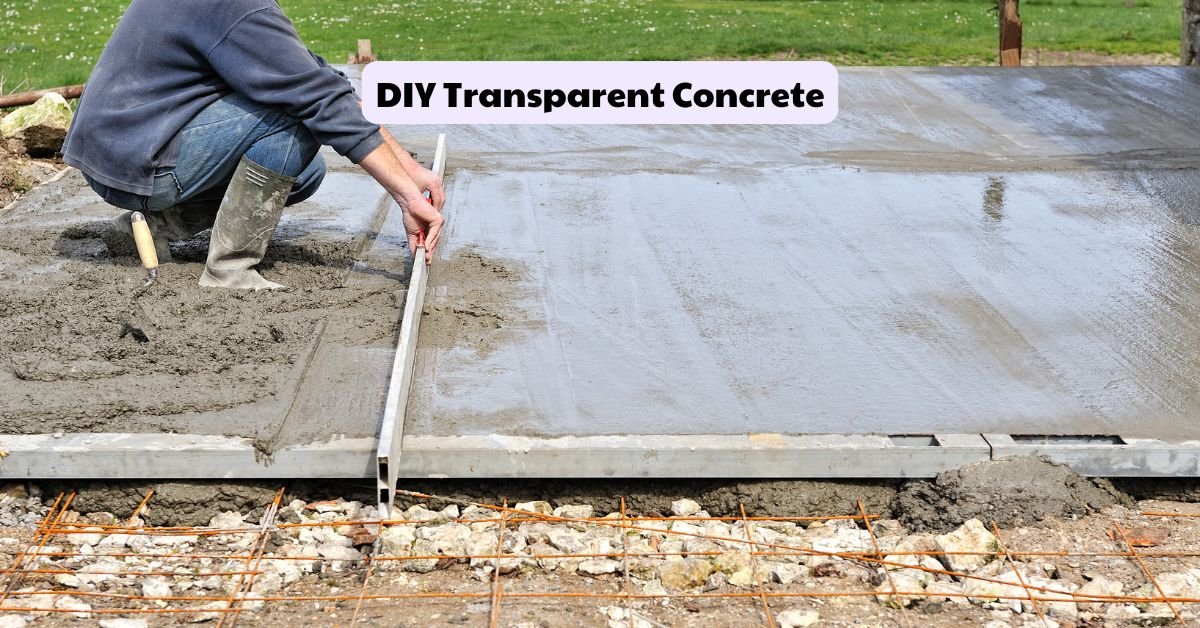Exploring Quantum Art – A New Frontier in Creativity
Quantum art is a new mix of science and art. It combines quantum physics with creativity. This new field offers a fresh way to see and understand the world.
When you explore quantum physics art, you enter a world where science and imagination meet. This world challenges traditional art in exciting ways.

Quantum creativity lets artists explore the mysterious nature of reality. They use quantum mechanics to make art that makes us think about space, time, and consciousness. This art not only delights our senses but also makes us think deeply about the universe.
Key Takeaways – Exploring Quantum Art
- Quantum art merges scientific principles with artistic expression
- It offers a fresh perspective on interpreting the world
- Quantum physics inspires new forms of creativity
- Artists explore concepts like superposition and entanglement
- Quantum art challenges traditional artistic practices
- It encourages contemplation of fundamental universal principles
The Intersection of Quantum Physics and Artistic Expression
Quantum physics art combines two worlds, creating a special space for creativity. This mix leads to new ways of expressing art and makes us think differently about reality and how we see things.
Understanding the Basics of Quantum Mechanics
Quantum mechanics examines how tiny things like atoms and particles behave. It discusses superposition, entanglement, and the simultaneous existence of a wave and a particle. These ideas inspire artists to be more creative.
| Quantum Concept | Artistic Interpretation |
| Superposition | Multiple states existing simultaneously |
| Entanglement | Interconnectedness of particles |
| Wave-particle duality | The blurring of distinct forms |
How Quantum Concepts Inspire Artistic Creativity
Artists are inspired by quantum physics to create art that makes us see things differently. They use ideas like uncertainty, being connected, and more than one reality, leading to new ways of making art in different forms.
The Birth of Quantum Art as a Genre
Quantum art started when artists added scientific ideas to their work. This kind of art connects science and art, showing us new views of the world. It keeps growing, making art and science closer together.
“Quantum art is not just about visualising scientific concepts; it’s about exploring the very nature of reality through artistic expression.”
Quantum art is becoming more popular, which means scientists and artists are working together more. This creates a special mix of creativity and scientific thinking.
Quantum Computing – A New Tool for Artistic Creation
Quantum computing art is changing the game in the creative world. Artists are using quantum algorithms and processors to make unique visuals and sounds. This new way of making art goes beyond old methods, opening up new possibilities.
Generative quantum art uses quantum mechanics to create unique pieces. Artists tap into quantum randomness to create works that change and can’t be predicted, making us rethink what we mean by creativity.
Quantum computing and art have led to some amazing projects. Some artists get inspiration from quantum noise, turning it into patterns or sounds. Others use quantum algorithms to make digital sculptures that go beyond what regular computers can do.
| Aspect | Traditional Art | Quantum Computing Art |
| Source of Randomness | Classical random number generators | Quantum randomness |
| Complexity | Limited by classical computing power | Exponentially higher due to quantum superposition |
| Reproducibility | Often reproducible | Inherently unique and non-reproducible |
As quantum computing improves, we’ll see more new uses in art. The combination of quantum and art will change how we see creativity and push the limits of what we can do in art.
The Role of Quantum Entanglement in Artistic Compositions
Quantum entanglement art explores the fascinating concept of interconnected particles. This unique genre pushes the boundaries of creativity. It merges science and art in captivating ways.
Visualising Quantum Entanglement through Art
Artists use various mediums to bring quantum entanglement to life. Paintings show intertwined particles, sculptures represent entangled states, and digital art highlights mysterious connections. These works offer a visual interpretation of complex scientific ideas.
Collaborative Quantum Art Projects
Quantum entanglement art often involves collaboration between artists and scientists. These partnerships result in innovative projects. They blend scientific accuracy with artistic vision.
Interactive installations allow viewers to experience entanglement firsthand. This fosters a deeper understanding of quantum phenomena.
| Project Name | Artist | Scientist | Medium |
| Entangled Visions | Emma Wright | Dr Sarah Chen | Digital projection |
| Quantum Threads | Marcus Lee | Prof. David Patel | Textile sculpture |
| Spooky Action | Olivia Torres | Dr James Wilson | Interactive VR experience |
The Philosophical Implications of Entanglement in Art
Quantum entanglement art raises thought-provoking questions about reality and interconnectedness. It challenges our perception of space and time, inviting viewers to contemplate the nature of existence.
This genre serves as a bridge between scientific concepts and philosophical inquiries, sparking meaningful discussions about the fabric of our universe.
Quantum Superposition – Embracing Uncertainty in Art
Quantum superposition art changes how we see the world. It’s inspired by the idea that things can be in more than one state at once. This opens up new ways for artists to express themselves, exploring themes of not knowing and multiple realities.
In this art, you’ll see works that go beyond normal limits. Paintings might show objects in different states together. Sculptures could look different from each view. Digital art might change its look constantly.
“Quantum superposition in art is like capturing a dream where everything is possible at once,” says renowned artist Emma Blackwood.
Artists playing with quantum superposition use various methods. These include:
- Layered images to show different states
- Installations that change with what the viewer does
- Art algorithms based on quantum physics
- Works that mix physical and digital parts
These art pieces are not just pretty. They make us think about what we know. Quantum superposition art encourages us to accept not knowing and see the endless possibilities in the quantum world.
Quantum Art – Bridging Science and Creativity
Quantum art is changing how we see science and creativity. It combines quantum physics with art, making complex science easy to understand through art. This mix opens new ways to see the world.
The Collaborative Efforts of Scientists and Artists
Scientists and artists are working together to make amazing art inspired by quantum physics. Their work brings hard-to-understand quantum ideas to life. By mixing science with art, they make pieces that make us think differently about reality.
Educational Value of Quantum Art
Quantum art is a great way to learn about complex science. It makes tough quantum theories easy for more people to understand. Through art, students and fans can better understand tricky ideas like superposition and entanglement.
This new way of learning connects science theory with real understanding.
Quantum Art Exhibitions and Installations
Quantum art shows are becoming more popular around the world. These events feature a wide range of art inspired by quantum physics, from paintings to digital installations. Through these exhibits, people can dive into the world of quantum physics, gaining a new respect for science and art.
“Quantum art allows us to visualise the invisible, turning abstract concepts into tangible experiences.”
Quantum art is growing and will change how we see the universe. It will inspire new scientists and artists for years to come.
Generative Quantum Art – Harnessing Randomness
Generative quantum art takes creativity to new heights by using quantum randomness. Artists use this randomness to make unique and eye-catching art, challenging old ideas about who makes the art.
Quantum creativity loves uncertainty. Artists use quantum computers or simulations to make truly random numbers or patterns. These random elements help create amazing visuals, music, or interactive experiences. The outcome is art that can’t be copied and always surprises everyone.
Generative quantum art can create endless variations. A single quantum algorithm can create many unique pieces. Thanks to quantum randomness, each piece is different, even if it starts from the same ‘seed’. This means we can have personalised art and exhibitions that keep changing.
“Generative quantum art is like collaborating with the universe itself. It’s a dance between human intention and cosmic chance.”
As quantum technology gets better, we’ll see more new things in art. We might see quantum-inspired brushstrokes or virtual realities made by quantum processes. The future of generative quantum art looks bright and full of possibilities.
- Quantum randomness ensures true uniqueness
- Infinite variations from a single algorithm
- Blurs lines between artist and medium
- Potential for interactive and evolving artworks
Let the quantum world inspire your art. Explore the endless possibilities of generative quantum art. Here, creativity has no limits, and every piece tells a story of chance from the cosmos.
Quantum Simulation Art – Visualising the Invisible
Quantum simulation art makes the hidden world of quantum physics visible. It combines science and creativity to show complex quantum phenomena in new ways.
Techniques for Quantum Simulation in Art
Artists use different methods for creating quantum simulation art. Some create visuals with computer algorithms, while others use data from quantum experiments.
This leads to abstract, vibrant pieces that make us see reality differently.
Notable Works in Quantum Simulation Art
Many artists have made a mark in quantum simulation art. Libby Heaney’s ‘Ent—’ installation uses quantum computers for stunning visuals, and Joao Martinho Moura’s ‘Quantum Suicide’ explores quantum superposition with interactive digital art.
Future Possibilities for Quantum Simulation in Visual Arts
The future of quantum simulation art is exciting. As quantum computing improves, artists will have more tools for complex simulations.
This could mean immersive quantum art experiences in virtual reality or large installations. Viewers could interact with quantum phenomena in new ways.
“Quantum simulation art opens up a new dimension of creativity, allowing us to visualise the fundamental building blocks of our universe.”
This field is growing, bringing together art and science. It will give us new views on the quantum world around us.
The Impact of Quantum Machine Learning on Artistic Creation
Quantum machine-learning art is changing the way we think about creativity. Artists are now using this new tech to explore new ideas and push the limits of art.
With quantum computing, artists can make complex algorithms that create unique art. These pieces often have amazing patterns and colours that go beyond what we’ve seen before.
This tech also lets art change and grow over time. As the algorithms get better, the art becomes more complex and makes us think more deeply.
“Quantum machine learning art represents a fusion of science and creativity, opening up endless possibilities for artistic exploration.”
Artists are working with quantum experts and computer scientists to create new tools. They’re combining the exactness of quantum tech with human creativity.
Quantum machine learning isn’t just for visual art. Musicians and writers are also using it to make new sounds and stories.
As quantum tech gets better, we’ll see more amazing art. Quantum machine-learning art is here to stay and will shape the future of creativity.
The Future of Quantum Art – Emerging Trends and Technologies
Quantum computing is moving forward, and so is quantum art. This mix of new tech and art will change how we make and see art.
Advancements in Quantum Computing and Their Artistic Implications
Quantum computing art is going to change the way we create. Artists will make complex, three-dimensional art that was hard to imagine before. This could lead to art that changes when people interact with it.
Predicted Developments in Quantum Art Techniques
Future quantum art might use quantum-inspired algorithms to create unique, changing art. We could see ‘quantum brushes’ for painting with quantum chances. This would create art that exists in more than one state at once.
The Potential for Quantum Art in Virtual and Augmented Reality
Virtual and augmented reality are great for quantum art. Imagine walking into a VR gallery where art changes around you or using AR to add quantum art to the real world. These technologies could make quantum physics come alive in a beautiful, interactive way.




